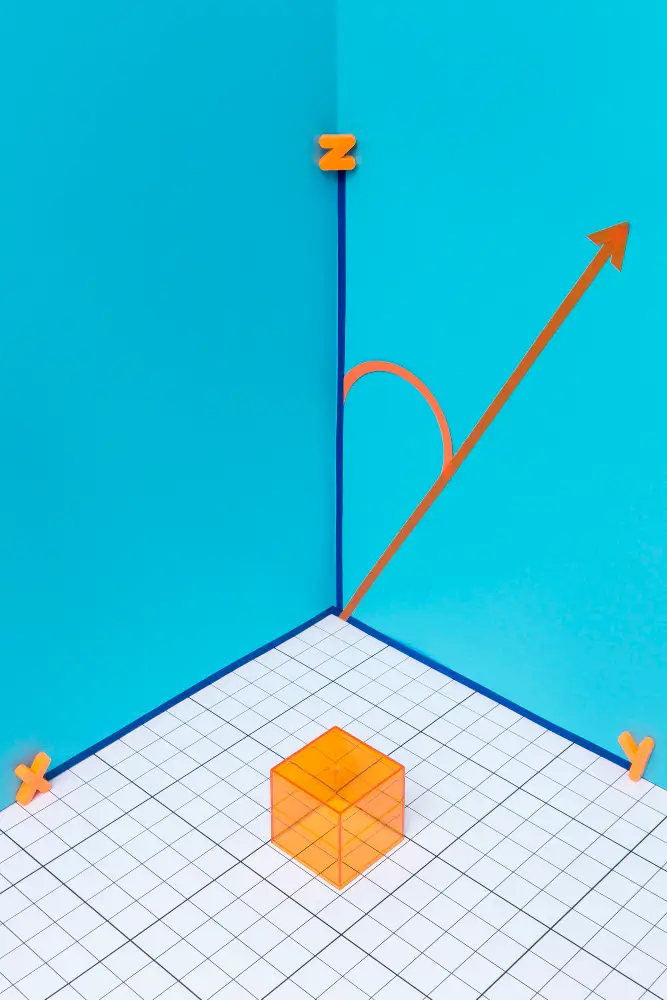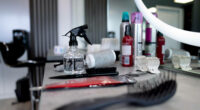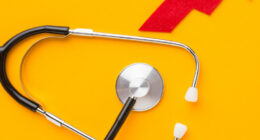Depth refers to how much detail exists within a single aspect, while width pertains to the range or variety of aspects covered within a topic.
When it comes to measurements, the terms “depth” and “width” are frequently used. But what exactly is the difference between depth and width? To gain a better understanding of these terms, let’s explore their definitions and meanings.
In general, depth refers to the measurement from front to back, while width refers to the measurement from side to side. However, their specific use can vary depending on the object or shape being described. For example, when discussing rectangles, the longer side is usually referred to as the length, while the shorter side is considered the width.
Furthermore, in three-dimensional figures like cubes or cuboids, the term width can refer to either the longest or shortest side, depending on the orientation of the object. The choice of whether to use the terms depth or width ultimately comes down to clarity and the specific context in which the measurements are being used.
Key Takeaways:
- The difference between depth and width lies in their directional measurements.
- Depth refers to the measurement from front to back, while width refers to the measurement from side to side.
- The specific use of these terms can vary depending on the object or shape being described.
- For rectangles, the longer side is typically called the length, while the shorter side is considered the width.
- In three-dimensional figures, the term width can refer to either the longest or shortest side, depending on the orientation of the object.
Understanding Length, Width, Height, and Depth

When it comes to measurements, it’s essential to familiarize yourself with the terms length, width, height, and depth. These dimensions play a significant role in describing the size and shape of various objects. To ensure clear and effective communication, let’s take a closer look at what each term represents:
Length: This refers to the longest dimension of an object, indicating its overall size from end to end. It is commonly used when describing the size of one-dimensional and two-dimensional objects.
Width: Width represents the measurement from side to side and determines the breadth or extent of an object. This dimension is particularly important when discussing the size of two-dimensional objects, such as rectangles or squares.
Height: Height describes the vertical measurement of an object, indicating how tall it is from the base to the top. It plays a crucial role in understanding the vertical extent or elevation of three-dimensional figures.
Depth: Similar to width, depth refers to the measurement from front to back, giving insight into the thickness or volume of an object. This dimension proves vital when discussing the three-dimensional characteristics of various shapes.
These terms are utilized to describe the dimensions of three-dimensional figures or objects, enabling effective communication in various fields such as architecture, design, and engineering. The choice of which term to use depends on the specific context and the orientation of the object being described.
To gain a better understanding of these dimensions, let’s consider an example:
Imagine a three-dimensional figure, such as a cube or cuboid. This image visually demonstrates how the dimensions of length, width, height, and depth are represented in such figures. By comprehending these measurements, one can better analyze and communicate the characteristics of three-dimensional objects with clarity.
The Relationship Between Length, Width, and Height
When describing rectangular objects, such as doors or desks, the relationship between length, width, and height becomes clearer. Length refers to the longest dimension, width refers to the measurement from side to side, and height indicates the vertical measurement. These terms are chosen to ensure clear and unambiguous communication, allowing others to easily visualize and understand the dimensions of the object. For example, when describing the width of a road, it is the measurement from one side to the other, while length refers to the long distance along the road. By using these terms consistently, confusion can be minimized and clear communication can be achieved.
To illustrate the relationship between length, width, and height in rectangular objects, let’s consider the dimensions of a desk:
| Dimension | Measurement |
|---|---|
| Length | 60 inches |
| Width | 30 inches |
| Height | 29 inches |
In the example above, the length of the desk is the longest side, the width is the measurement from left to right, and the height indicates its vertical measurement. Using these terms consistently helps in conveying accurate information and avoiding confusion when discussing the dimensions of the desk.
The visual representation above depicts the relationship between length, width, and height in a rectangular object, making it easier to understand how these dimensions are interconnected. By maintaining clarity and effective communication when discussing rectangular objects, such as doors, desks, or any other furniture, we can ensure that everyone shares the same understanding of their dimensions.
The Use of Height and Base in Measurements
When discussing measurements, the terms “height” and “base” are often used together to indicate specific dimensions. Height refers to the vertical measurement of an object, indicating how tall it is. On the other hand, base has a specific meaning that does not necessarily refer to a vertical measurement.
The use of height and base can vary depending on the shape being described. While these terms are commonly used for rectangular objects, they may not feel natural or provide clear communication when describing non-rectangular shapes, such as a tennis ball. In such cases, it is best to explicitly describe the distance or measurement, rather than relying on standardized terms like length, width, height, or depth.
By using clear and descriptive language, we ensure that our measurements are accurately communicated and easily understood.
| Shape | Use of Height | Use of Base |
|---|---|---|
| Rectangle | Vertical measurement | Longer side |
| Cone | Vertical measurement | Circle at the bottom |
| Tennis Ball | No specific height | Measurement not applicable |
Width in Two-Dimensional Shapes
In the realm of two-dimensional shapes, understanding the concept of width is essential. Width refers to the measurement of the shortest side of a shape, indicating its breadth from side to side. When discussing rectangles, the width can also be referred to as the breadth, which typically represents the shorter side of the object. In contrast, the longer side is often described as the length.
It’s important to note that the width of two-dimensional shapes can vary depending on the specific object being described. For example, when it comes to furniture like bookshelves or drawers, the width may differ based on their intended use and design considerations. The variations in width allow for customization and adaptability to fulfill specific functional and aesthetic requirements.
To provide a visual representation of how width is calculated in two-dimensional shapes, here is an example of a rectangular bookshelf with its corresponding dimensions:
| Dimensions | Measurements |
|---|---|
| Length | 120 cm |
| Width (Breadth) | 60 cm |
| Height | 180 cm |
As shown in the table, the width (breadth) of the bookshelf is 60 cm, representing its measurement from side to side. This measurement allows us to understand the space the bookshelf occupies and how it fits within a given environment.
Depth in Two-Dimensional Shapes
In two-dimensional shapes, depth refers to the measurement from front to back. It indicates how deep an object is. For example, when considering furniture like cupboards or bookshelves, the depth can vary depending on their intended use and design. Choosing the right depth is essential for ensuring functionality and maximizing space utilization.
Variations in Depth
The depth of two-dimensional shapes, such as cupboards and bookshelves, can vary significantly. This variation allows for customization based on individual needs and available space. For small spaces, a compact depth can be chosen to minimize the furniture’s protrusion into the room. On the other hand, larger depths provide more storage capacity, accommodating a greater number of items.
Considerations for Cupboards and Bookshelves
- Intended Use: Consider the specific purpose of the cupboard or bookshelf. Will it primarily store books, files, or other items? Determining the intended use will help in selecting the appropriate depth.
- Available Space: Measure the space where the furniture will be placed. Ensure the chosen depth allows for easy movement around the area and doesn’t obstruct pathways.
- Items to be Stored: Consider the size and types of items that will be stored in the cupboard or on the bookshelf. Different depths can accommodate various items, such as larger boxes or taller objects.
- Design and Aesthetics: The depth can also play a role in the overall design and aesthetics of the furniture piece. It can create visual interest and proportion when combined with other dimensions.
To illustrate the importance of depth in two-dimensional shapes, consider the following example:
| Furniture | Depth | Intended Use |
|---|---|---|
| Cupboard | 16 inches | Storing files and documents |
| Bookshelf | 12 inches | Displaying books and decorative items |
| Cupboard | 20 inches | Organizing larger items and equipment |
These examples showcase variations in depth based on the intended use of the furniture. It is crucial to assess individual requirements and consider factors such as functionality, available space, and aesthetic preferences when choosing the depth of cupboards and bookshelves.
By understanding the concept of depth in two-dimensional shapes and considering its variations, individuals can make informed decisions when selecting and describing furniture. The appropriate depth ensures optimal functionality, efficient space utilization, and a visually appealing design.
Width and Depth in Three-Dimensional Shapes

In three-dimensional shapes, such as cubes or cuboids, the measurement of width and depth can vary depending on the orientation of the shape. The width can refer to either the longest or shortest side, depending on how the shape is positioned. Similarly, the depth can also vary depending on the orientation of the shape. It is important to understand that there is no specific rule for naming the dimensions of three-dimensional figures, except for making sure the labels used make sense and are clear. Labels like width and depth are often used interchangeably, depending on what seems wide or deep about the figure.
When measuring the dimensions of a three-dimensional shape, it is essential to consider the orientation and perspective from which the width and depth are being observed. This variation in measurement adds nuance and complexity to the understanding of these two dimensions.
- The width of a three-dimensional shape may be interpreted as the distance from one side to the other, perpendicular to the viewer’s line of sight.
- On the other hand, the depth can be seen as the measurement from the front of the shape to its furthest point back along the viewer’s line of sight.
This variability in width and depth is particularly relevant in the case of cuboids, which are rectangular prisms with six rectangular faces. The orientation of the cuboid can significantly affect the perceived width and depth. For example, if a cuboid is positioned with its longest side facing the viewer, that side can be referred to as the width. Conversely, if the shortest side is facing the viewer, then that side becomes the width.
Understanding the variations in measurement and the orientation of shapes is crucial for accurately describing and visualizing three-dimensional figures like cuboids. The concepts of width and depth provide valuable insights into the spatial characteristics of these shapes, allowing for clearer communication and a better grasp of their dimensions.
Determining the Size of an Office Desk
When choosing an office desk, it is important to consider its size, including the width, depth, and height. The size of an office desk will depend on various factors, such as the available space, the equipment that will be used on the desk (e.g., monitors, keyboards), and the compatibility with the office chair.
The width of an office desk can vary based on the specific needs and preferences of the user. Some individuals may require a wider desk to accommodate multiple monitors or additional workspace, while others may prefer a narrower desk for a more compact setup.
The depth of an office desk is typically standardized to accommodate storage pedestals and other accessories. A standard depth of 600mm or 800mm is commonly used to ensure adequate space for organization and functionality.
The height of an office desk is an important consideration for ergonomic purposes. It should be compatible with the user’s height and the office chair being used to promote proper posture and reduce strain. Most office desks have a standard height of around 725mm to 730mm, but adjustable desks are also available to customize the height according to individual preferences.
In order to determine the best size for an office desk, it is essential to assess the available space, consider the equipment that will be used, and ensure compatibility with the office chair. Creating a comfortable and efficient workspace requires careful consideration of these factors to optimize productivity and overall well-being.
Choosing the Right Width for an Office Desk
When selecting an office desk, it’s crucial to consider the width based on several important factors. The first consideration is the space available where the desk will be placed. You want to ensure that the desk fits comfortably in the designated area without making the space feel cramped or overcrowded.
The next consideration is the intended usage of the desk. If the primary purpose is laptop work or short periods of time, a narrower width may be sufficient. However, if the desk will be used for tasks that require additional space, such as multiple monitors or paperwork, a wider desk may be more suitable to accommodate these needs.
Furthermore, compatibility with other furniture in the office should also be taken into account. It’s important to maintain a cohesive and professional look by choosing an office desk width that aligns with the size and style of other furniture pieces in the workspace.
By considering the available space, intended usage, and compatibility with other furniture, you can choose the right width for your office desk that promotes productivity and a pleasant work environment.
Considering the Depth of an Office Desk
The depth of an office desk is an important aspect to take into consideration when selecting the ideal desk for your workspace. In general, standard office desks have a depth of either 600mm or 800mm. However, the optimal depth ultimately depends on your specific needs and preferences.
A deeper desk offers more surface area, providing ample space for various tasks, such as placing additional equipment or utilizing accessories like storage pedestals. This allows for a clutter-free and organized workspace, promoting productivity and efficiency.
While a deeper desk offers more workspace, it is essential to consider the available legroom. Ensure that the desk depth does not restrict movement or hinder comfort while sitting. Adequate legroom enables proper posture and enhances overall comfort throughout the workday.
Additionally, personal workspace preferences play a vital role in selecting the depth of an office desk. Some individuals prefer a shallower desk, which can create a more compact and ergonomic setup, especially in smaller work environments. Considering your own preferences will ensure optimal comfort and satisfaction with your chosen office desk.
To further illustrate the different depths available for office desks, refer to the table below:
| Desk Depth (mm) | Description |
|---|---|
| 600mm | A standard depth that provides sufficient workspace and storage options. |
| 800mm | A deeper depth that allows for expanded workspace and convenient placement of accessories. |
Choosing the appropriate depth for your office desk ensures practicality, comfort, and an efficient workspace that caters to your specific needs. By taking into account considerations such as storage requirements, legroom, and personal preferences, you can select a desk that optimizes your productivity and enhances your overall work experience.
Ensuring the Proper Height of an Office Desk
The height of an office desk is a crucial consideration when creating an ergonomic and comfortable workspace. A desk set at the correct height promotes good posture, reduces strain on the body, and enhances overall productivity. It is important to take into account several factors when choosing the height of an office desk.
Considerations for Office Desk Height
When selecting an office desk, the following considerations will help ensure the proper height:
- Ergonomic Setup: An office desk should be at a height that allows for a relaxed and neutral posture. This minimizes the risk of musculoskeletal injuries and discomfort in the neck, shoulders, and back.
- Adjustable Desks: Opting for an adjustable desk, such as a height-adjustable or standing desk, provides the flexibility to customize the desk height to suit individual preferences and promote healthy movement throughout the workday.
- Chair Compatibility: It is crucial to ensure that the chosen office desk is compatible with the office chair being used. The desk height should allow for proper alignment between the chair and the desk surface, enabling comfortable typing and writing tasks.
To summarize, selecting an office desk with the appropriate height is vital for creating a comfortable and ergonomic workspace. Adjustable desks offer flexibility, while considering chair compatibility ensures optimal alignment and support. By considering these factors, individuals can design a workspace that promotes productivity, comfort, and overall well-being.
Conclusion
Understanding the difference between depth and width is essential when choosing and describing furniture, especially when it comes to office desks. Depth refers to the measurement from front to back, while width indicates the measurement from side to side. Although the specific use of these terms can vary depending on the object or shape being discussed, they play a significant role in determining the dimensions of furniture.
When selecting office furniture, such as desks, it is crucial to consider the dimensions of width, depth, and height to create a functional and ergonomic workspace. By carefully analyzing the available space, intended usage, and compatibility with other furniture, individuals can make informed decisions that meet their specific needs. Creating a well-designed workspace involves more than just aesthetic appeal; it is about prioritizing comfort and functionality.
By understanding measurements and considering factors such as width, depth, and height, individuals can choose the right furniture that enhances productivity and promotes a healthy work environment. It is important to create a workspace that accommodates the equipment being used, provides ample legroom, and allows for proper posture. Whether it’s a home office or a corporate setting, investing time in selecting the right furniture is an investment in creating a functional workspace.
FAQ
What is the difference between depth and width?
Depth refers to the measurement from front to back, while width refers to the measurement from side to side.
How are length, width, height, and depth defined?
Length refers to the longest dimension, width to the measurement from side to side, height to the vertical measurement, and depth to the measurement from front to back.
How are length, width, and height used in describing rectangular objects?
Length refers to the longest side, width to the measurement from side to side, and height to the vertical measurement.
What is the use of height and base in measurements?
Height typically refers to the vertical measurement, while base has a specific meaning in conjunction with height that does not necessarily refer to a vertical measurement.
What does width indicate in two-dimensional shapes?
Width in two-dimensional shapes refers to the measurement of the shortest side, indicating how broad an object is from side to side.
What does depth indicate in two-dimensional shapes?
Depth in two-dimensional shapes refers to the measurement from front to back, indicating how deep an object is.
How do width and depth vary in three-dimensional shapes?
The measurement of width and depth can vary depending on the orientation of the shape in three-dimensional figures like cubes or cuboids.
What should be considered when determining the size of an office desk?
Important considerations for office desk size include the width, depth, and height based on available space, equipment used, and office chair compatibility.
How do you choose the right width for an office desk?
Considerations when choosing the width of an office desk include the available space, intended usage, and compatibility with other furniture in the office.
What factors are important when considering the depth of an office desk?
Important factors when considering the depth of an office desk include available legroom, workspace preferences, and the need to accommodate storage pedestals and other accessories.
Why is the proper height of an office desk crucial?
The proper height of an office desk is crucial for ergonomic purposes and to ensure compatibility with the user’s height and office chair being used.
What is the conclusion about depth vs. width and choosing the right furniture?
Understanding the difference between depth and width is essential for choosing and describing furniture accurately. Considering the dimensions of width, depth, and height can help create a functional and ergonomic workspace that meets specific needs.
Source Links
- https://elementarymath.edc.org/resources/measurement-length-width-height-depth/
- https://www.splashlearn.com/math-vocabulary/measurements/width
- https://www.chairoffice.co.uk/blog/understanding-office-furniture-measurements/
Image Credits
Featured Image By – Freepik
Image 1 By – 8photo on Freepik
Image 2 By – Freepik









